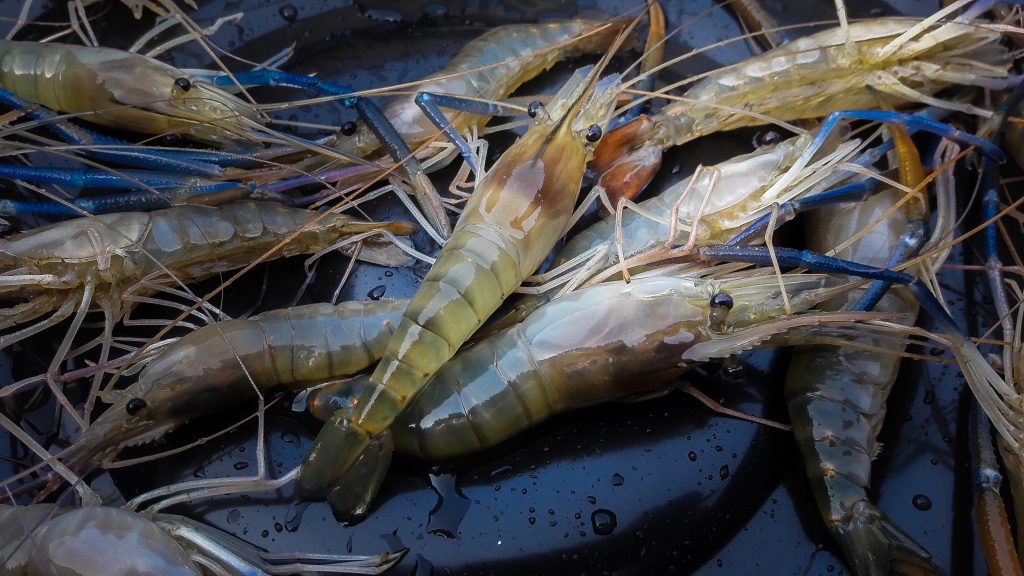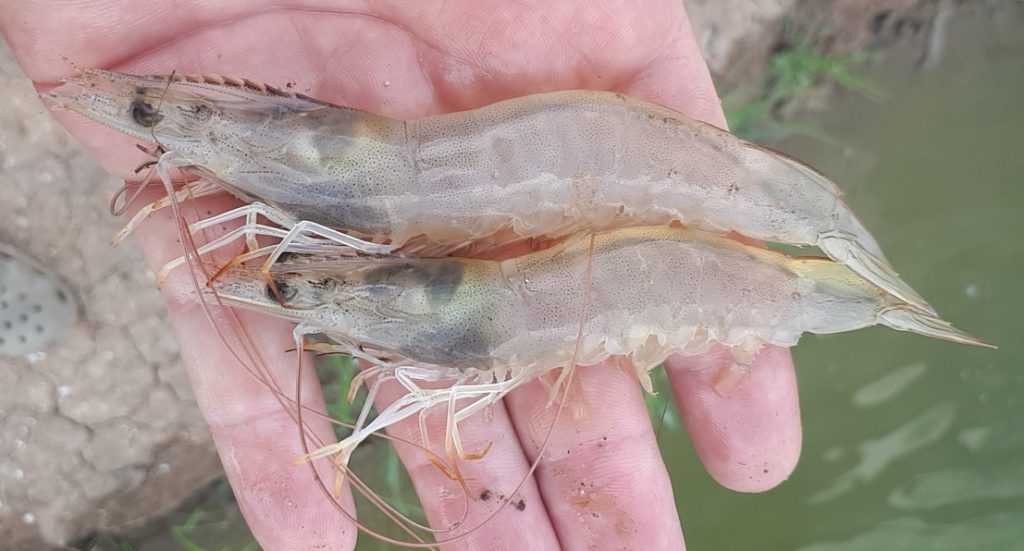Giant River Prawn (Macrobrachium rosenbergii)

M. rosenbergii or Giant River Prawn is a large freshwater prawn from the Indo-Western Pacific. The distribution ranges from northwest India to Vietnam, the Philippines, New Guinea and northern Australia. It has been introduced for aquaculture in many countries. No adverse effects have been reported so far, i.e. If there are negative influences, they are not noticeable so far. Rosenberg prawns belong to the family of partner and rock prawns (Palaemonidae), which comprises more than 100 genera. The natural range extends from Pakistan to the Southeast Asian region to Borneo and Java. There, the shrimp can be found in rivers and streams as well as in lakes and ponds. To colonize new habitats, these shrimp can migrate overland in damp weather. As omnivore, the shrimp feed on either plant, such as fruits, seeds or algae, or animal fare, such as worms, molluscs, insects and carrion. Smaller specimens of the same species or freshly skinned individuals are also on the menu. M. rosenbergii stocks are extremely hierarchical. The dominant male sneaks some females around his applied nest and vigorously defends them against rivals. Males grow larger than the female animals and grow faster. The colors of M. rosenbergii may vary depending on the location of the shrimp, but the body can be greenish-gray. In small individuals, delicate stripes can be seen on the cephalothorax. The Chelipeds of dominant men are light blue, but more yellowish in non-dominant men and women. The ventral side is pale and translucent.
Among the shrimp produced in aquaculture (233,898 t FAO 2016), the Rosenberg yarns (Macrobrachium rosenbergii) occupies a special position. In contrast to the Black Tiger shrimp (Penaeus monodon) and the whitefoot shrimp (Litopenaeus vannamei), adult giant river prawns are native to fresh water. Of particular interest is its pronounced, multi-level sex dimorphism. While the females do not change further in their shape after the completion of the metamorphosis from larva to juvenile shrimp (post-larva), the males go through three stages of development in which they undergo both their morphology, their body coloration, as well as their Change behavior (polymorphism). The M. Rosenbergii owes its name to the German naturalist Baron Carl Benjamin Hermann von Rosenberg (1817 – 1888), who was particularly responsible for his scientific discoveries in present-day Indonesia (former Indonesia). Dutch East Indies).
White foot shrimp (Litopanaeus Vannamei)

Litopenaeus vannamei, White shrimp or Whiteleg shrimp is a ten-foot decapoda from the Penaeidae family. This shrimp, native to the eastern Pacific, is one of the most important farmed prawns and is sold worldwide. The bred amount of Litopenaeus vannamei in 2011 2.877.542 tons. Simpler breeding claims have, among other things, Also led to the displacement of P. monodon in the farms. White foot shrimp reach body lengths of 23 cm, the maximum length of the Carapax is then around 9 cm. Females are usually larger than males of the same age as they grow faster. The entire body has a mostly translucent milky coloration, but can also vary depending on soil condition, diet and water cloudiness.
The Rostrum has seven to ten backside teeth and two to four abdominal teeth. The thelycum of females is rather open. In males, the petasma is symmetrical and half open. The ridge running backwards from the rostrum does not quite reach to the rear edge of the Carapax. Compared to other species of the genus, the Carapax is relatively short relative to the abdomen and the tip of the rust is rather downward. L. vannamei becomes sexually mature at the age of six to seven months. Males are then about 20g heavy, females about 28g. Females weighing 30 to 45g produce 100,000 to 250,000 eggs with a mean diameter of 0.22mm. Around 16 hours after the eggs are fertilised, the Zoea larvae hatch. Those are free to swim, show phototaxis and do not eat. During the protozoea, mysis and postlarva lardia, they remain planktic and feed on phyto-and zooplankton. As a post-larve, Litopenaeus vannamei transitions into a benthic way of life and then feeds on detritus, worms, shells and other crustaceans.
The natural range of Litopenaeus vannamei is the Pacific coast of Sonora in the north via Central America to the Peruvian region of Tumbes in the south. There she lives in sea depths from 0 to 72 meters on muddy ground. Adults live marine rather than benthont, while larvae can be found floating freely as plankton just off the coast, mostly in estuaries, lagoons or mangrove forests. The water temperature is always above 20 ° C all year round. (Source: Wikipedia)